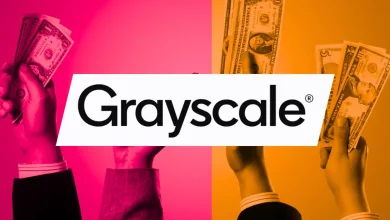
Cryptocurrency is evolving at an unprecedented pace. Once banned in several countries, it has now emerged as a significant medium of payment in numerous regions worldwide. This digital currency revolution is not only changing how people transact but also how they borrow and spend money. A recent report from the Office of Financial Research (OFR), dated November 26, 2024, delves into the increasing adoption of crypto and its implications on personal finance. The findings reveal a notable trend: individuals are leveraging their cryptocurrency profits to secure larger loans, potentially laying the groundwork for future financial challenges.
The Surge in Cryptocurrency Borrowing
The OFR’s analysis, which incorporates data from the IRS, highlights a threefold increase in household exposure to cryptocurrency from 2020 to 2021. No longer confined to the affluent, this trend has permeated low-income areas, which are experiencing significant transformations. For instance, mortgage balances among low-income families have surged by over 150%, with more households taking on mortgages than ever before. Between 2020 and 2024, mortgage borrowing in these areas escalated by 250%. It is evident that cryptocurrency is driving individuals to assume more debt.
The Expansion of Mortgages and Loans
The substantial returns from cryptocurrency investments—such as the remarkable 300% increase witnessed in 2020—have emboldened individuals to assume larger debts. Many are utilizing their crypto gains to make substantial down payments on homes, thereby fueling an increase in mortgage borrowing. The OFR report also points to a rise in auto loans, although delinquency rates have not yet reached alarming levels. However, there is a caveat. Some households are overextending themselves, pushing their debt-to-income ratios to precarious levels. While the current crypto boom might inspire confidence, the potential repercussions of a market downturn loom large.
Demographics of Those Borrowing More
Although young individuals and residents of tech-centric areas have traditionally been prominent crypto investors, it is the low-income households in regions with high crypto activity that are now leading the borrowing charge. These families are channeling their crypto wealth into significant purchases, subsequently taking on more debt. The volatile nature of crypto, which can skyrocket in value just as rapidly as it can plummet, poses a considerable risk. Should the market decline, households that have heavily leveraged their assets may struggle to meet their financial obligations.
Potential Risks Ahead
As of early 2024, delinquency rates in high-crypto areas remain relatively low, but this could shift should crypto prices take a downturn. Rising debt levels in low-income communities could become problematic if the value of cryptocurrencies begins to fall. Households that acquired substantial loans to purchase homes or vehicles using crypto profits may face difficulties in repaying them. Such scenarios could have broader implications for their financial stability and future.
Balancing Opportunities and Risks
The OFR report underscores the dual nature of cryptocurrency as both a wealth-building tool and a risk factor. While leveraging crypto gains for significant investments may seem prudent in a thriving market, it simultaneously exposes households to potential vulnerabilities if the market collapses. With debt levels on the rise, particularly in economically disadvantaged areas, the risk of financial instability is increasing. This is a dynamic that warrants close observation as the cryptocurrency landscape continues to evolve.






